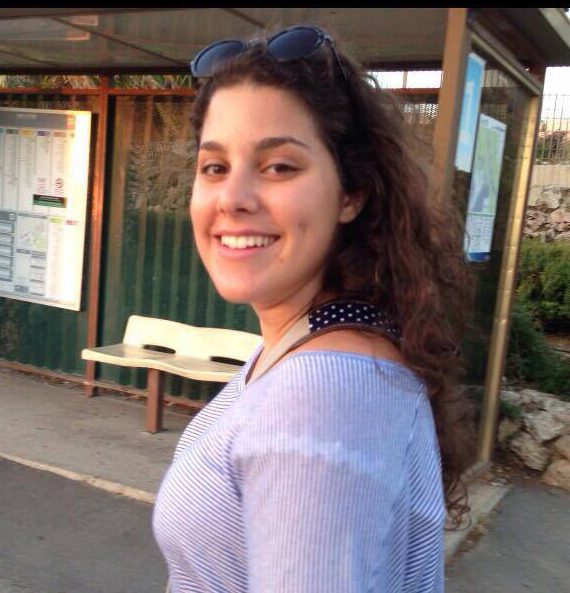
Being a child, I looked out-of-place in that demonstration in Rabin Square, Tel Aviv. It was a warm autumn evening in 2002 and I was almost 6 years old. A little girl with big eyes sitting on her father’s shoulders, surrounded by thousands of people, banners and yellow Labour Party balloons.
The square was unusually full, and it seemed that it could not contain that many people; it was a huge rectangular square framed by three adjoining roads and a huge rectangular concrete building from the 1960s, which is Tel Aviv’s town hall. It was lit by harsh light emitted from large floodlights, separating the well-lit square from the dim street.
My father, a man in his mid-30s, was like many Israelis in that demonstration; fighting for his future and the future of his children. He felt disappointment seeing this spirit within the Israeli people, the spirit that killed Rabin seven years ago, in the exact same square. It wasn’t the Israel he knew, and he didn’t know what kind of land his children will inherit. He tried to shield them from all the fear and the hate, but realized this was impossible, finding himself speechless as his oldest daughter, now sitting on his shoulders, challenged him with questions such as ‘why are we fighting with the Palestinians?’ or ‘is there an actual green line drawn on the ground?’.
He tried to explain, turning the complex situation into simple kindergarten scenarios. From a young age, he taught me the importance of compassion, and that problems can always be solved by words. But he realized that I already understood the severity of reality, and took me to that demonstration as a reminder (for me and for himself) that there is hope.
Once the demonstration started, different people stood on the stage facing the crowd and gave speeches. I didn’t understand what they were saying, so I looked around me and read the banners’ slogans, understanding or trying to make sense of the words. I joined the demonstrators’ clapping and cheering anyway, despite not fully realizing the significance. But I knew we had one important purpose, calling for peace.
After the speeches were over, everyone started marching. Still on my father’s shoulders, we walked towards Dizengoff Square, and joined the demonstrators’ singing. I remember looking up to see the trees shielding over my head in the streets and the dimmed light from the street lamps. Rows of parked cars tightly packed by the narrow pavement. I knew many of the songs, and loudly joined-in in ‘Shir LaShalom’ (Song for Peace) which I knew Rabin sang just before he was assassinated. I clearly remember the sense of unity and responsibility, being a part of such an important event and fighting for something I believe in. Feeling invincible, that I’m a part of a large movement that speaks the truth, and cannot lose.
As I grew up I still remembered my first demonstration as a significant event. This demonstration empowered me, gave me hope and inspired me. The more I think about it I realize that I grew up in a very political society, which taught me to fear and distrust. But that demonstration showed me the importance of hope, and the power that lies in action; in acting according to your values. And I think that this demonstration is what turned me into a political animal.
 Being a child, I looked out-of-place in that demonstration in Rabin Square, Tel Aviv. It was a warm autumn evening in 2002 and I was almost 6 years old. A little girl with big eyes sitting on her father’s shoulders, surrounded by thousands of people, banners and yellow Labour Party balloons.
The square was unusually full, and it seemed that it could not contain that many people; it was a huge rectangular square framed by three adjoining roads and a huge rectangular concrete building from the 1960s, which is Tel Aviv’s town hall. It was lit by harsh light emitted from large floodlights, separating the well-lit square from the dim street.
My father, a man in his mid-30s, was like many Israelis in that demonstration; fighting for his future and the future of his children. He felt disappointment seeing this spirit within the Israeli people, the spirit that killed Rabin seven years ago, in the exact same square. It wasn’t the Israel he knew, and he didn’t know what kind of land his children will inherit. He tried to shield them from all the fear and the hate, but realized this was impossible, finding himself speechless as his oldest daughter, now sitting on his shoulders, challenged him with questions such as ‘why are we fighting with the Palestinians?’ or ‘is there an actual green line drawn on the ground?’.
He tried to explain, turning the complex situation into simple kindergarten scenarios. From a young age, he taught me the importance of compassion, and that problems can always be solved by words. But he realized that I already understood the severity of reality, and took me to that demonstration as a reminder (for me and for himself) that there is hope.
Once the demonstration started, different people stood on the stage facing the crowd and gave speeches. I didn’t understand what they were saying, so I looked around me and read the banners’ slogans, understanding or trying to make sense of the words. I joined the demonstrators’ clapping and cheering anyway, despite not fully realizing the significance. But I knew we had one important purpose, calling for peace.
After the speeches were over, everyone started marching. Still on my father’s shoulders, we walked towards Dizengoff Square, and joined the demonstrators’ singing. I remember looking up to see the trees shielding over my head in the streets and the dimmed light from the street lamps. Rows of parked cars tightly packed by the narrow pavement. I knew many of the songs, and loudly joined-in in ‘Shir LaShalom’ (Song for Peace) which I knew Rabin sang just before he was assassinated. I clearly remember the sense of unity and responsibility, being a part of such an important event and fighting for something I believe in. Feeling invincible, that I’m a part of a large movement that speaks the truth, and cannot lose.
As I grew up I still remembered my first demonstration as a significant event. This demonstration empowered me, gave me hope and inspired me. The more I think about it I realize that I grew up in a very political society, which taught me to fear and distrust. But that demonstration showed me the importance of hope, and the power that lies in action; in acting according to your values. And I think that this demonstration is what turned me into a political animal.
Being a child, I looked out-of-place in that demonstration in Rabin Square, Tel Aviv. It was a warm autumn evening in 2002 and I was almost 6 years old. A little girl with big eyes sitting on her father’s shoulders, surrounded by thousands of people, banners and yellow Labour Party balloons.
The square was unusually full, and it seemed that it could not contain that many people; it was a huge rectangular square framed by three adjoining roads and a huge rectangular concrete building from the 1960s, which is Tel Aviv’s town hall. It was lit by harsh light emitted from large floodlights, separating the well-lit square from the dim street.
My father, a man in his mid-30s, was like many Israelis in that demonstration; fighting for his future and the future of his children. He felt disappointment seeing this spirit within the Israeli people, the spirit that killed Rabin seven years ago, in the exact same square. It wasn’t the Israel he knew, and he didn’t know what kind of land his children will inherit. He tried to shield them from all the fear and the hate, but realized this was impossible, finding himself speechless as his oldest daughter, now sitting on his shoulders, challenged him with questions such as ‘why are we fighting with the Palestinians?’ or ‘is there an actual green line drawn on the ground?’.
He tried to explain, turning the complex situation into simple kindergarten scenarios. From a young age, he taught me the importance of compassion, and that problems can always be solved by words. But he realized that I already understood the severity of reality, and took me to that demonstration as a reminder (for me and for himself) that there is hope.
Once the demonstration started, different people stood on the stage facing the crowd and gave speeches. I didn’t understand what they were saying, so I looked around me and read the banners’ slogans, understanding or trying to make sense of the words. I joined the demonstrators’ clapping and cheering anyway, despite not fully realizing the significance. But I knew we had one important purpose, calling for peace.
After the speeches were over, everyone started marching. Still on my father’s shoulders, we walked towards Dizengoff Square, and joined the demonstrators’ singing. I remember looking up to see the trees shielding over my head in the streets and the dimmed light from the street lamps. Rows of parked cars tightly packed by the narrow pavement. I knew many of the songs, and loudly joined-in in ‘Shir LaShalom’ (Song for Peace) which I knew Rabin sang just before he was assassinated. I clearly remember the sense of unity and responsibility, being a part of such an important event and fighting for something I believe in. Feeling invincible, that I’m a part of a large movement that speaks the truth, and cannot lose.
As I grew up I still remembered my first demonstration as a significant event. This demonstration empowered me, gave me hope and inspired me. The more I think about it I realize that I grew up in a very political society, which taught me to fear and distrust. But that demonstration showed me the importance of hope, and the power that lies in action; in acting according to your values. And I think that this demonstration is what turned me into a political animal.

Beautiful, hopeful and empowering.
Keep the hope going!